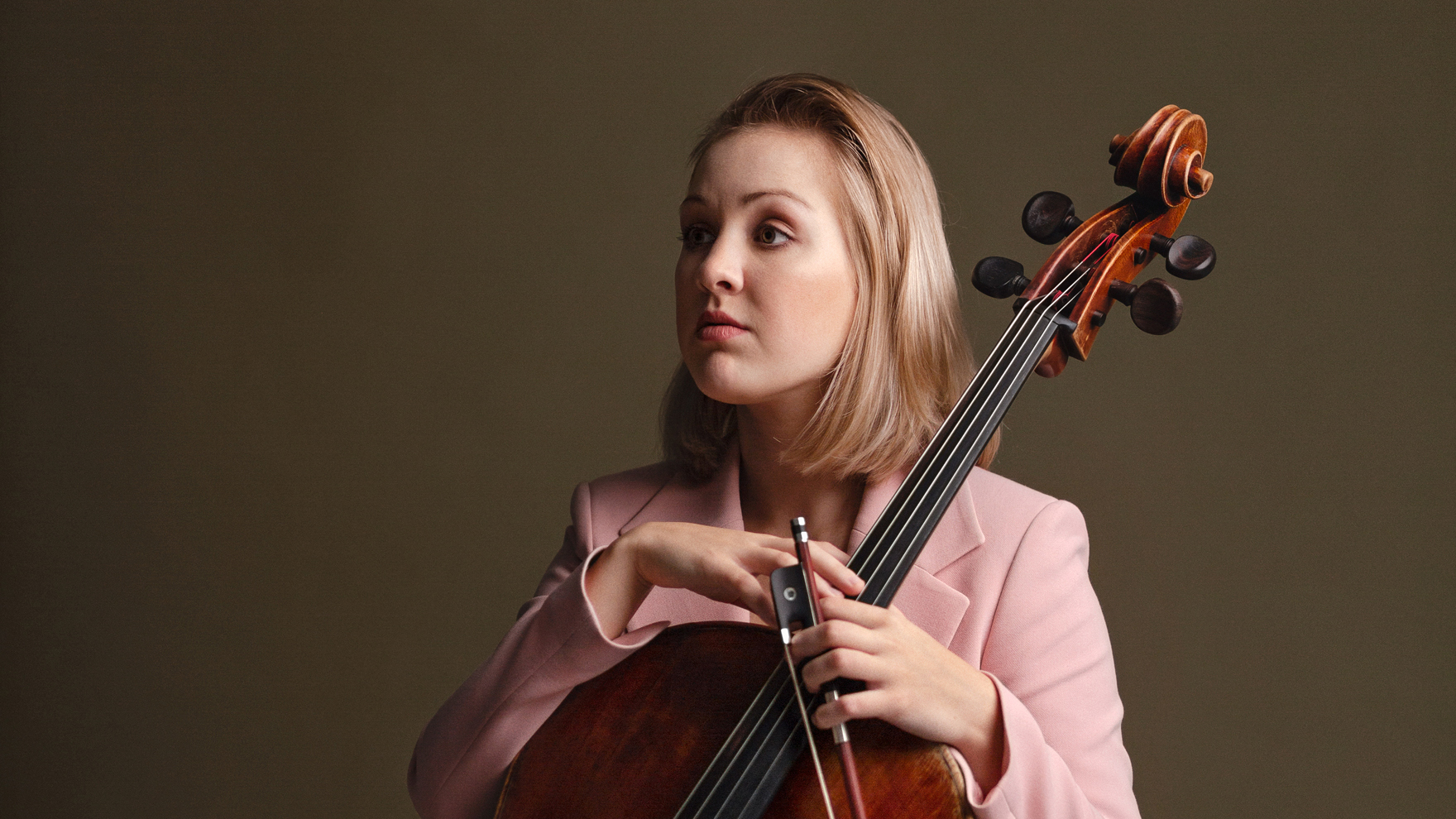Conducted by Dima Slobodeniouk, this concert features French elegance, the mystery of a fleeting moment, and a heart-rending Soviet Russian cello concerto, the soloist is Tchaikovsky Competition finalist Senja Rummukainen.
Conducted by Dima Slobodeniouk, this concert features both French elegance and a heart-rending Soviet Russian cello concerto. Darius Milhaud’s miniature symphony flickers with Mediterranean light and displays the composer’s vast range of influences: from jazz and Brazilian music to 1920s Parisian café culture.
Calls, Prisms, Far spaces, Litanies, Soliloquies… The parts of Henri Dutilleux's composition illuminate the journey towards the mystery of a fleeting moment. Senja Rummukainen, the orchestra's own cellist and finalist in the prestigious Tchaikovsky Competition, will perform in front of the HPO as soloist of Shostakovich's cello concerto.
Darius Milhaud: Chamber Symphony No. 5, Op. 75
Darius Milhaud (1892–1974) was one of the greatest French Modernist composers. Distancing himself from the Late Romanticism and Impressionism of, in particular, Debussy, he drew inspiration from jazz, African rhythms and the music of South America. In the late 1910s, he spent three years in Rio de Janeiro and while there composed the first of six “little” chamber symphonies (as opposed to his later 12 symphonies for large orchestra). Like its sister works, Chamber Symphony No. 5 (1922) for winds is very compact, compressing everything into a mere six minutes spread over three movements. The touches of polyphony perhaps look ahead to the budding Baroque boom and the harmonies and rhythms reflect the arrival in Europe of American jazz. The link with Stravinsky’s Rite of Spring is also obvious, and Milhaud conducted the premiere of his Symphony in the very hall where The Rite had been performed a decade before.
Dmitri Shostakovich: Cello Concerto No. 1 in E-flat, Op. 107
Two things prompted Dmitri Shostakovich (1906–1975) to write his first Cello Concerto. One was the great cellist Rostropovich, who in the 1940s amazed Moscow with his performance of a concerto by Prokofiev deemed impossible to play, and the other was the death of Stalin in 1953. For the first time in nearly 30 years, Shostakovich felt free to compose as he wished. Now, at last, he could forget the political ideology and any technical and emotional constraints, because Rostropovich had none. This Shostakovich concerto is one of the greatest tests for the cellist. The scoring is nevertheless light and brass instruments are conspicuous by their absence, apart from the French horn that tailgates the soloist like a shadow just out of sight.
The concerto is divided into two large sections: an opening one and three more, all performed without a break. The third movement consists entirely of a solo cadenza lasting nearly six minutes. Right at the beginning, the cello announces (twice) the four-note motto that will later transform into D-S-C-H. Shostakovich’s musical signature, derived from his name, occurs frequently in his works.
Henri Dutilleux: Mystère de l’instant
A leading 20th-century French composer, Henri Dutilleux (1916–2013) nevertheless ranked among the more conservative, subscribing to soft timbres and slowly-shifting harmonies. Mystère de l’instant (1989) for 24 strings, cimbalom and percussion focuses on the beauty of the moment. The ten movements, though performed without a break, are totally independent units, addressing each idea as it arises with no reference to what comes before or after. The instruments likewise also lead a life of their own; though mostly playing together and building the same harmonies, they have numerous micro-level solos. The textures of the movements also differ. Espaces (no. 4), for example, is a canon between very high and very low. Rumeurs (no. 7) is a swarming glissando for the whole orchestra, and Soliloque (no. 8) features solo cadenzas. Metamorphoses (no. 9) is a play on the name SACHER (where S = E-flat and H= B) after the Swiss conductor who commissioned the piece. The inclusion of a cimbalom, a Hungarian folk instrument, is a tribute to one of Dutilleux’s idols, Béla Bartók.

